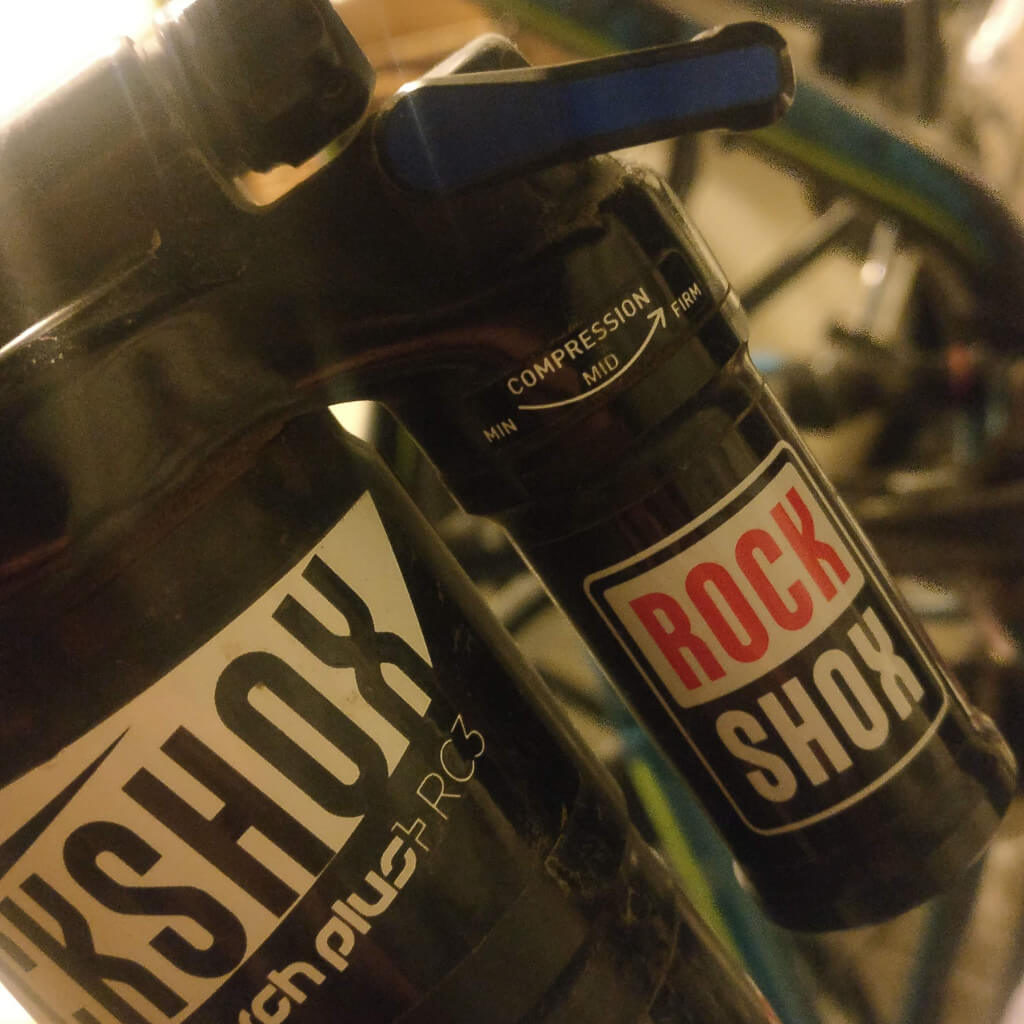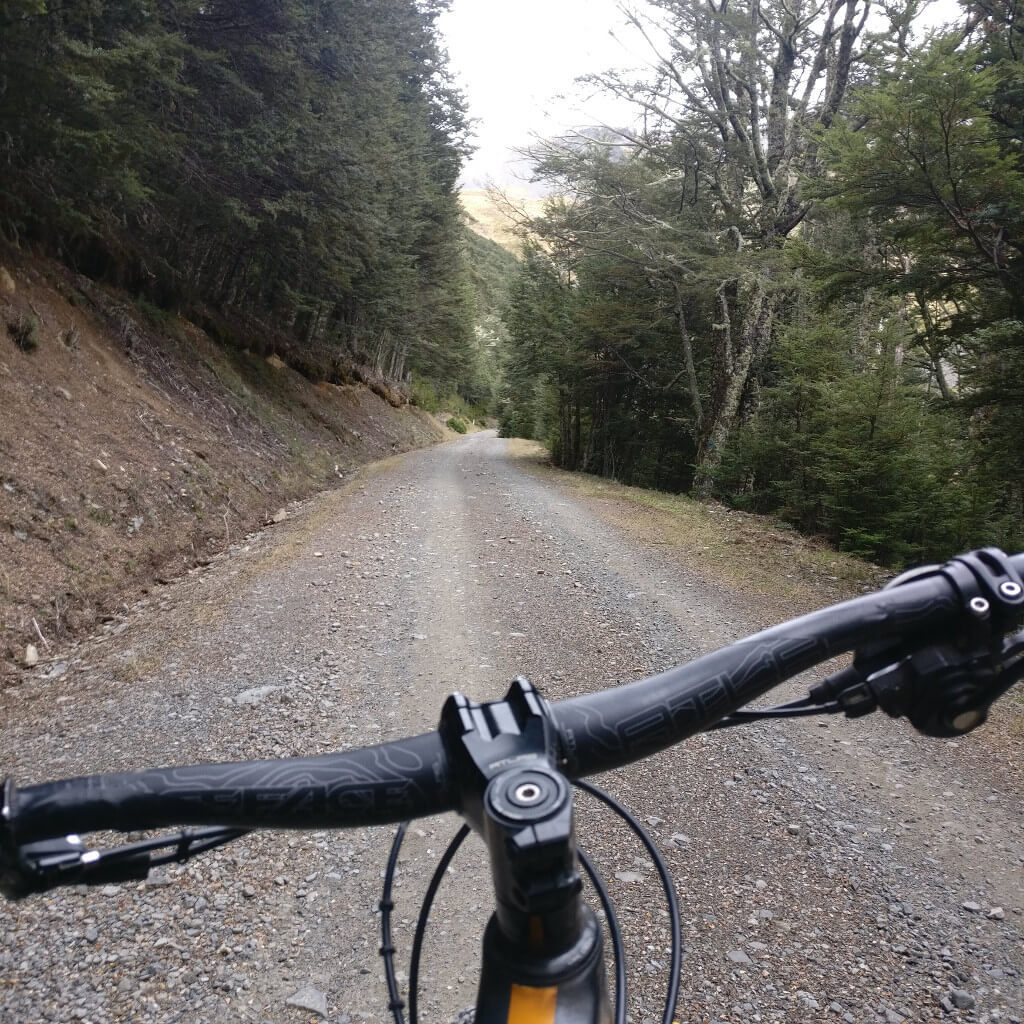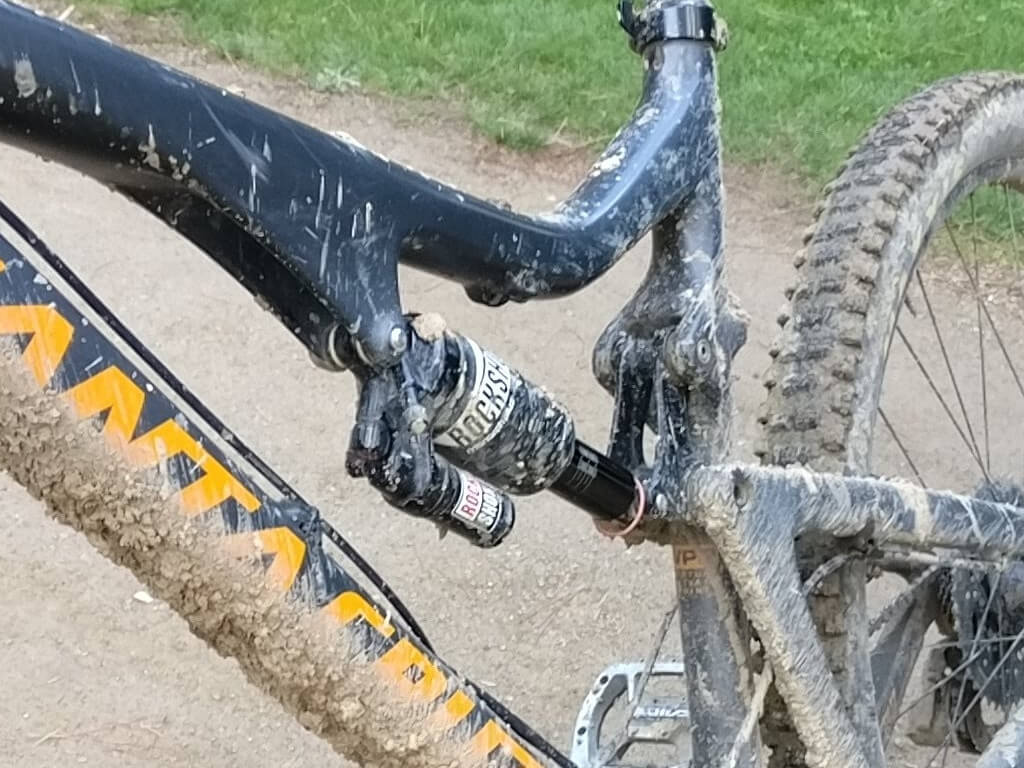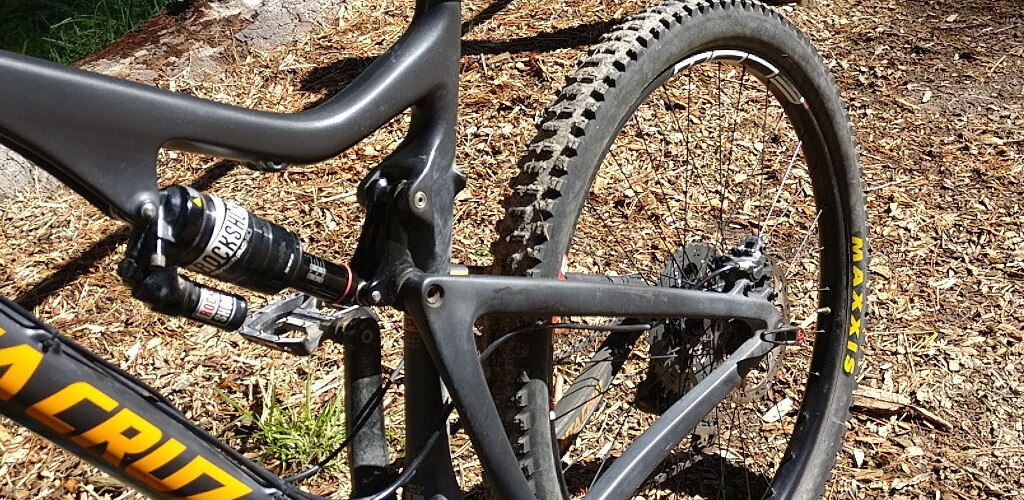Usually the only times you would lock out your rear shock (or front fork) would be when on a long non-technical climb, or other long distance ride.
Mountain bike suspension often features multiple modes, to better set up the bike to climb or descend, and one of these common features is the lock out.
But when should we be using it? Are there trails that you shouldn’t lock out your suspension on?
What is lockout suspension?
Many rear shocks (as well as front forks) have a lockout feature, which essentially stops it from compressing, and “locks out” the shock in a fixed position. This rear shock lockout is used at specific times when riding to help prevent wasted pedaling energy in the form of bobbing of the suspension. Instead, each pedal stroke transfers more of your energy into forward momentum – or at least that is the theory.

Rear shock lockout vs lockable fork suspension
As we’ve covered, rear shocks often have some form of lockout – but so too do many forks – for essentially the same reason.
However, with more of your weight and pedaling power from further back on the bike, the majority of the energy wastage is going to typically happen via the rear shock.
When to use it?
Climbing on a fireroad or slowly riding up another non-technical climbing trail is one of the most common times that riders use their bike suspension lockout.
Why I specifically say non-technical climbing is because often the more technical climbing trails with roots and roots and other tricky features to navigate actually can be better to ride with more active suspension, to help maintain traction and momentum.
Locking out your shock is equally effective over long distances, either on the road as you’re riding to a trailhead, or once again on a non-technical long traverse trail for instance.
Pro tip : If you’re needing to calculate average biking speed needed to cover a certain distance, check out my biking speed calculator.

When NOT to use it?
Basically for any sort of riding other than climbing or gravel grinding for long distances, you’re usually going to want your suspension active, to help your wheels track over rough terrain and obstacles.
This is going to be the case whether you’re at high or low speed.
How to know if your shock is locked out without looking?
You’ll normally be able to tell immediately if your shock is locked out, as the back end of the bike will feel very different with virtually no movement possible from the shock.
The rear wheel will also have far less ability to track up and down over rough trail at speed, and if you were to ride a trail forgetting to first switch off, would feel very harsh and skittish over bumps and rocks.

Can you simply lock out a shock that has low pressure?
Some years back I was using a basic Fox Float rear shock which had come with my Bronson build that developed a tendency to lose air pressure slowly.
I was already planning on upgrading the shock, so just made do as best I could until I had the funds spare for the new shock.
I’d just add a few PSI to it every week to keep riding pretty normally – until one day I arrived at the trailhead and discovered it had dramatically lower air pressure. Yikes.
I didn’t have a shock pump in the backpack, so needed to try and make it somewhat rideable until I found someone who had a pump I could borrow.
In it’s current state it was diving through well over half it’s travel just sitting on the bike. Not good.
Not being familiar with the inner workings of a mountain bike shock, I wondered…
If I lock the shock out, would that somehow reduce the amount of shock sag, and make it more possible to get down the trail without bottoming out every 2 minutes?
Well, turns out it doesn’t work that way 🙂
There just wasn’t the air pressure required to fully extend the shock, and I still had to gently make my way down the trail until I found someone with a shock pump, when I could get it running more normally to be able to finish my ride (and swapped out the shock the next week).
What happens if you go off a drop while locked out?
Firstly, it’s not the way your shock was intended to be used.
Secondly, you’re going to have a bad time.
Obviously from time to time when we are out on the trail we’ll forget to flip our suspension into the right mode before we start charging down some gnarly descent.
Usually we’ll realize pretty quickly that something feels off, and flip shock modes to get it sorted – but it would certainly be possible to have those first features in a trail come up fast and end up hitting a drop with rear shock locked out.
The good news is it shouldn’t be the end of the world (depending on the size of the drop hehe), as most shocks are built tough enough not to be damaged by doing something like that once in a while (I don’t imagine it would be great if you were always riding locked out though).
Likewise in terms of your own experience hitting the drop, the landing is obviously going to be a lot harsher an impact – but hopefully it’s not a flat drop anyway, and has a decent transition to land on, to help direct your momentum down the trail rather than down into the ground, harshly trying to compress your suspension and your body in the process.
What about jumps while locked out?
Nope, not a good idea.
If you’re wanting a more hardtail-like jumping experience, to help reduce fork and shock compressing into the jump (and consequently losing some momentum and airtime), then just add more air pressure to both to firm them up.
Jumping while locked out is actually explicitly warned against by most suspension manufacturers, and is likely going to wind up damaging your shock.
So yeah, common methods riders will use to help their long travel full suspension bikes handle jump lines better are running higher air suspension pressures, and often also higher tire pressures to maintain more speed and predictable pop off the lip of the jump.
So many settings, so little time…
Depending on your mountain bike, and type of suspension, there can be a dizzying array of different settings to tweak – air pressures, volume reducing tokens, oil weight, compression, rebound etc.
My take on this is that I just want to get the bike setup reasonably well, so I find it predictable over whatever terrain or obstacles I’m riding – and just leave it alone.
I know some mountain bikers enjoy the constant twiddling to tune how their bike feels on the trail, and hey that is all good if that is a positive aspect of mountain biking for them!
For some riders, they’re actually not enjoying the suspension tuning process, and it almost ends up holding them back from just getting familiar with their bike handling in one particular setting, and being able to simply enjoy riding their bike.
So if that is you, I can’t recommend enough just getting it to 90% of “perfect”, and riding your bike and enjoying yourself!
Have fun out there.

